Travelling round Sweden this summer, we’d booked a time with most of the places we wanted to visit, but as Box did two tours a day all summer, we just showed up. The eldest was exceedingly happy about being left in the visitor centre with a pad, wifi access and 100 SEK to buy ice cream with. There aren’t many distilleries that have more child-friendly waiting areas. The youngest was relegated to dad’s back. Unforunately, she was not happy with this arrangement, so Arve missed most of the tour. One of the drawbacks of public tours is that the other visitors may not appreciate a screaming almost-two-year-old taking part. Oh, well.
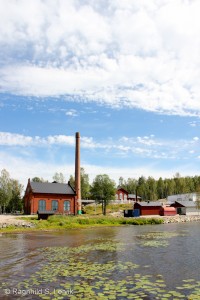
Box is obviously a popular tourist attraction, despite the maginificent weather our group consisted of 14 people. Anders Jonasson was our guide and he started the tour by relating the site’s history. The name Box is actually the name of the site, despite its un-Swedish twang. The site on the Ångerman river was named after a sawmill which was built here to take advantage of the timber being floated down the river. From the 1850ies they specialised in producing planks that were exported to England to make boxes, hence AB Box. After a fire in 1890 the site was sold and a steam powered power station was built here. It was finished in 1912 and the main building is what houses the distillery today. Steam power was soon superceeded by hydraulic power stations, but the building was in use until the sixties. It was then left to deteriorate for 30 years, until Mats de Vahl took action to save it from being torn down in 1991. Various initiatives have since been tested to keep the place alive, and it has served as an art gallery among other things. What was needed was an idea that could bring jobs and traffic, preferably a business that would not be sold and offshored once it was a success, and whisky productions seemed the perfect solution. Mats and his brother Per got eight other enthusiasts on board (including our tour guide)and founded Box Distillery. In 2010 the first spirit ran from the still.
Earlier this year Box released their first whisky, the three year old Pioneer. You can find my tasting notes here.
Following the history lesson we were equipped with blue shoe covers and entered the distillery proper. We said hello to the mill (not a Portheus) and got to taste the malt. The unpeated malt is Swedish, the peated malt used to be sourced from a Belgian maltster but is currently from Simpsons in Scotland. They have four malt barns with a capacity of 13 tonnes each.
At the mashtun we were told that they run two waters, 5000 liters and then 1300 liters, which results in 6300 liters of worts. Once in the washback (the washbacks are stainless steel) 5 kilos of Belgian dry yeast is added. A fruity and somewhat tart beer develops, with an ABV of around 7.5% after 48 hours, but they leave it for another 24 to take advantage of the lactic acid which forms towards the end and which they find gives a flavour profile they like.
The wash runs through the wash still and gives low wines of around 23% ABV. Then we come to the business end of things: The spirit still. They cut from head to heart at around 13 minutes for unpeated and 30 minutes for peated, and from heart to tail at 67% for unpeated and 60% for peated. One of the best parts of building your own distillery must be to get to play around with these details. Which yeast, how long to ferment for, when to cut? At Box they are left with around 320 liters of newmake, around 10% of the wash volume.
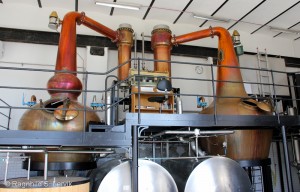
The stills are from Forsyths, and they have a beautiful view of the Ångerman river. The still room may get warm when the stills are running, but as far as looks go you really can’t complain about working conditions at Box.
To ease the switch between peated and unpeated spirit and avoid “contamination” they have separate holding tanks, for a small distillery this seems to me to be a smart choice. A week’s production is five times 640 liters at 70% ABV, which is taken down to 63% ABV before being filled. Yearly production is between 150,000 and 160,000 liters filled into casks. The warehouses are not insulated at all, so the temperature varies between -30 and +30 degrees centigrade throughout the year. The warehouse we got to see contains about a year’s production, they have another, larger warehouse which will take around six years’ production, then they will have to build another one.


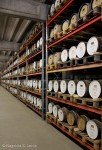

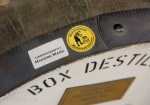

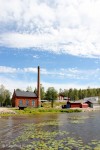

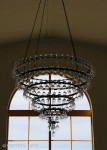
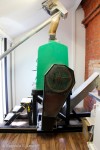
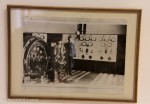
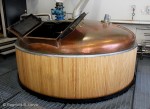


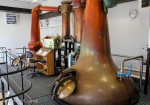
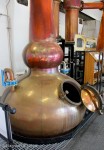
2 thoughts on “Box Distillery”